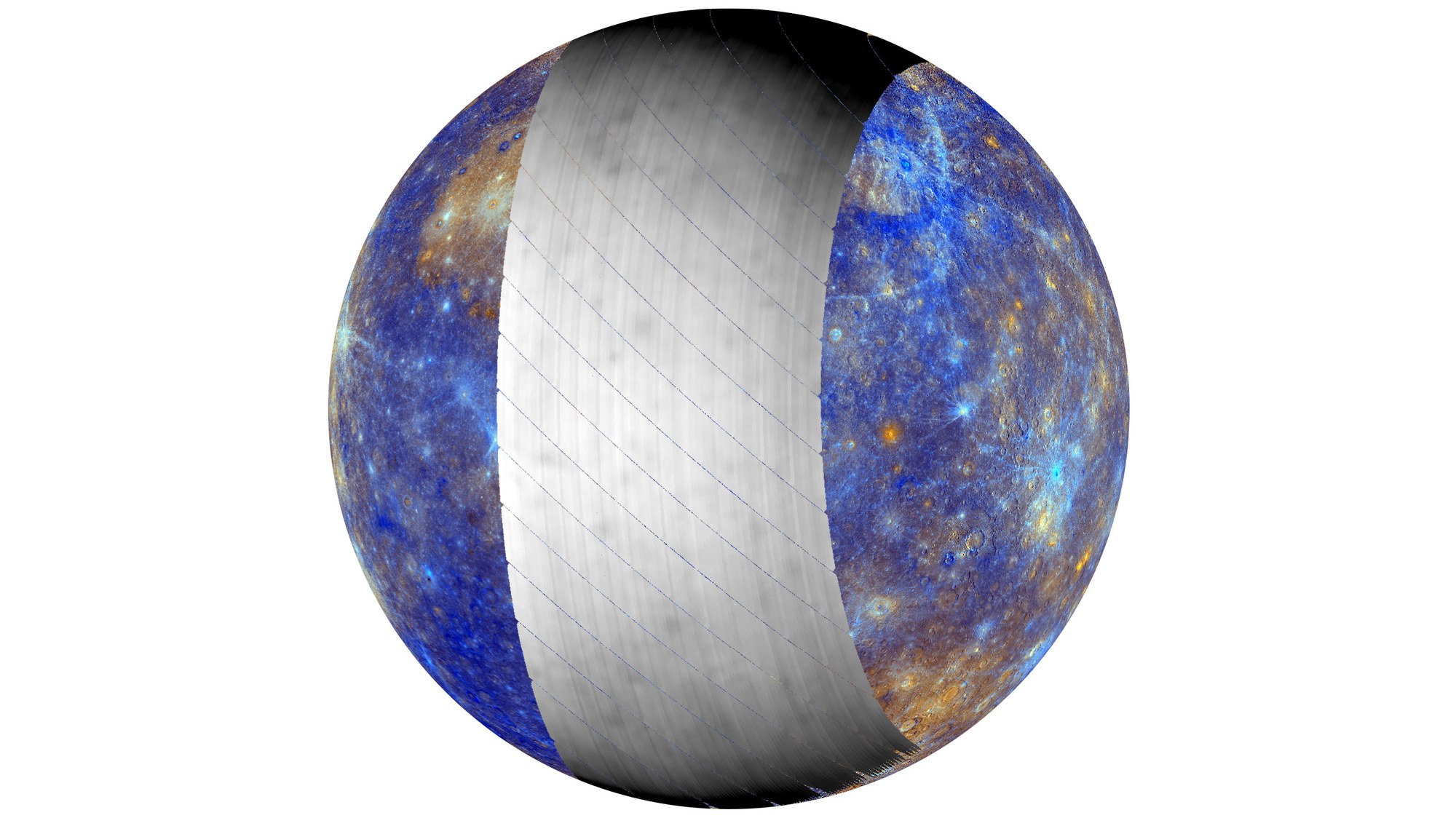Coverage of MERTIS measurements during Mercury flyby
Coverage of MERTIS measurements during Mercury flyby
This global view of Mercury is a contrast-enhanced image mosaic, calculated from data from the camera system of NASA's MESSENGER mission, which orbited the planet from 2011 to 2015. The colours reflect the differences in the mineralogy of the rocks on the surface. During the flyby of ESA's BepiColombo space probe on 1 December 2024, at a distance of approximately 40,000 kilometres, the MERTIS spectrometer was switched on. It scanned Mercury in thermal infrared wavelengths between 7 to 14 micrometres. The wide grey strip indicates the regions captured by MERTIS. At the top left, the 2500-kilometre-wide Caloris basin, the largest impact structure on Mercury, is visible. To enable the MERTIS observations, the instrument had to be reprogrammed as its 'Planet View' optics originally intended for the measurements did not allow for a view of Mercury. However, the side-oriented 'Space View'.

